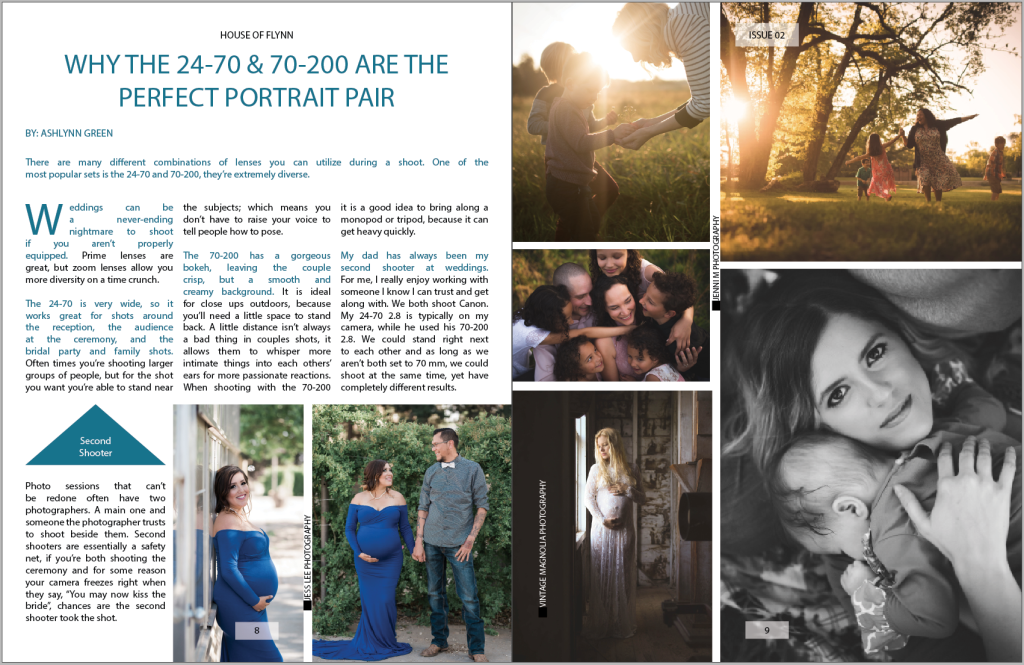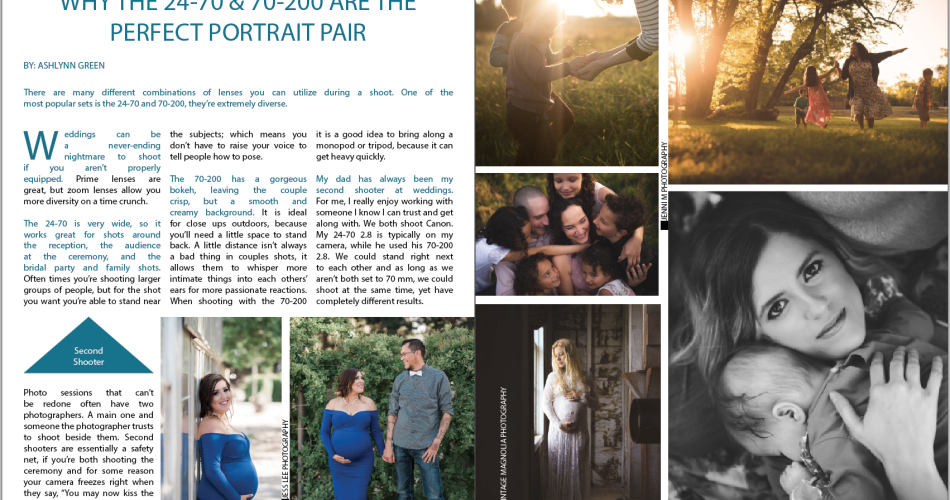There are many different combinations of lenses you can utilize during a shoot. One of the most popular sets is the 24-70 and 70-200, they’re extremely diverse.
Weddings can be a never-ending nightmare to shoot if you aren’t properly equipped. Prime lenses are great, but zoom lenses allow you more diversity on a time crunch.
The 24-70 is very wide, so it works great for shots around the reception, the audience at the ceremony, and the bridal party and family shots. Often times you’re shooting larger groups of people, but for the shot you want you’re able to stand near the subjects; which means you don’t have to raise your voice to tell people how to pose.
The 70-200 has a gorgeous bokeh, leaving the couple crisp, but a smooth and creamy background. It is ideal for close ups outdoors, because you’ll need a little space to stand back. A little distance isn’t always a bad thing in couples shots, it allows them to whisper more intimate things into each others’ ears for more passionate reactions. When shooting with the 70-200 it is a good idea to bring along a monopod or tripod, because it can get heavy quickly.
My dad has always been my second shooter at weddings. For me, I really enjoy working with someone I know I can trust and get along with. We both shoot Canon. My 24-70 2.8 is typically on my camera, while he used his 70-200 2.8. We could stand right next to each other and as long as we aren’t both set to 70 mm, we could shoot at the same time, yet have completely different results.
Second Shooter
Photo sessions that can’t be redone often have two photographers. A main one and someone the photographer trusts to shoot beside them. Second shooters are essentially a safety net, if you’re both shooting the ceremony and for some reason your camera freezes right when they say, “You may now kiss the bride”, chances are the second shooter took the shot.
This article was originally published in The House of Flynn Magazine, in the Motherhood Issue, 2017.


